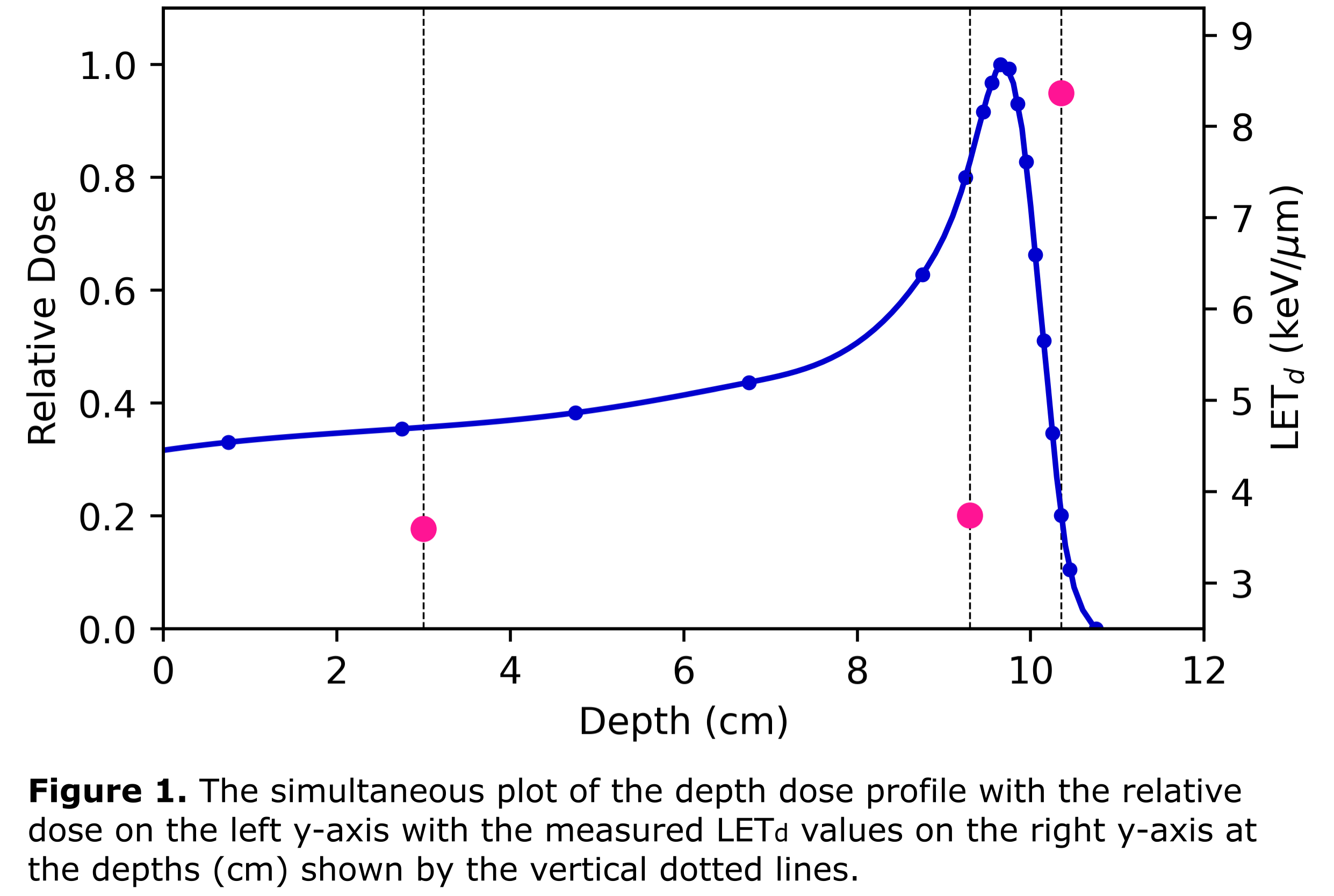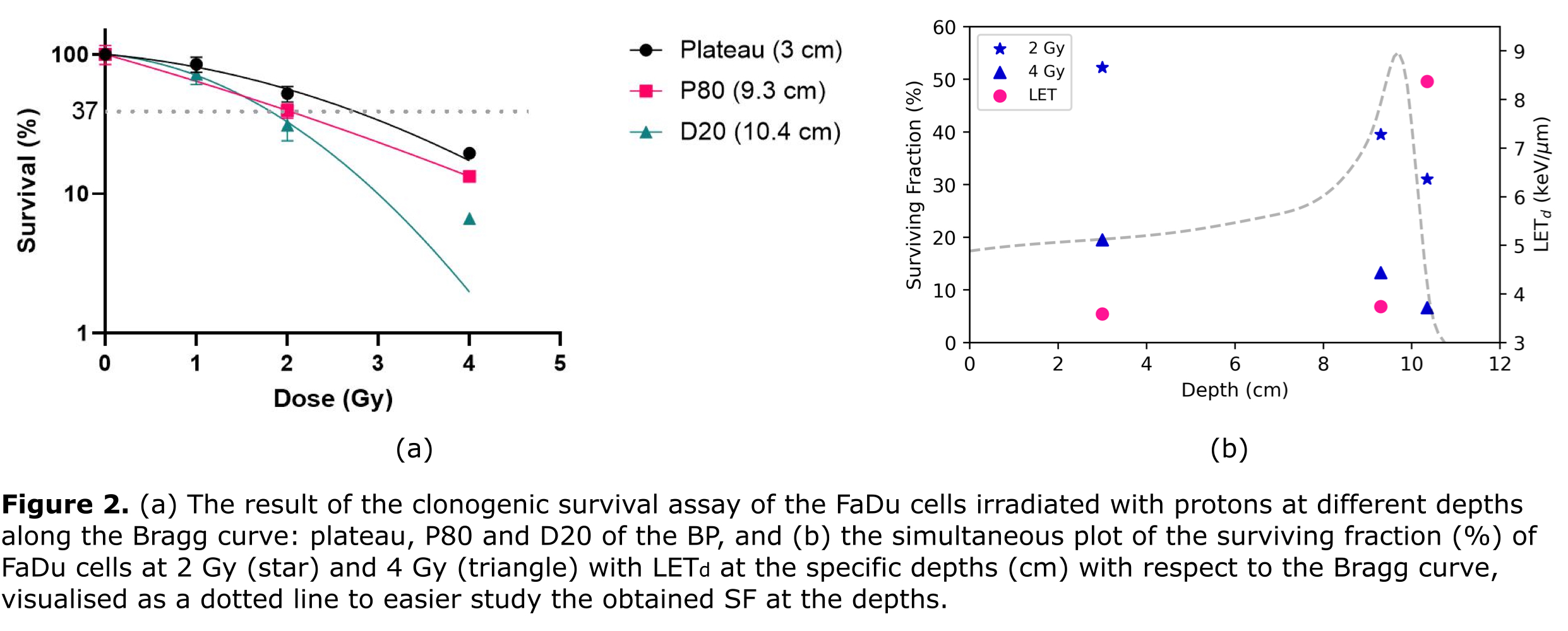Linking Linear Energy Transfer to the surviving fraction of FaDu cells at HollandPTC
Danny Lathouwers,
The Netherlands
PD-0825
Abstract
Linking Linear Energy Transfer to the surviving fraction of FaDu cells at HollandPTC
Authors: Celebrity Groenendijk1, Tim Heemskerk2, Marta Rovituso3, Wouter Van Burik3, Linh Tran4, Anatoly Rosenfeld4, Danny Lathouwers5, Jeremy Brown6
1Delft University of Technology, Radiation Science & Technology, Delft, The Netherlands; 2Erasmus University Medical Center, Department of Molecular Genetics, Rotterdam, The Netherlands; 3HollandPTC, Research & Development, Delft, The Netherlands; 4University of Wollongong, Centre for Medical Radiaton Physics (CMRP), Wollongong, Australia; 5Delft University of Technology, Radiation Science & Technology, Wollongong, The Netherlands; 6Swinburne University of Technology, Department of Physics and Astronomy, Hawthorn, Australia
Show Affiliations
Hide Affiliations
Purpose or Objective
The proton Bragg curve is characterized by its varying Linear Energy Transfer (LET) along its depth with the LET in its distal fall-off being one of the largest sources of uncertainty in proton radiotherapy. This work aims to link dose-averaged linear energy transfer (LETd) measured with a solid-state microdosimeter to the in vitro surviving fraction (SF) of the FaDu HNSCC cell line at three specific depths: the plateau, the proximal 80% (P80) of the Bragg peak (BP) and the distal 20% (D20) of the BP to obtain a deeper understanding of the effect of varying LET on cell survival. The availability of this information will contribute to the enhancement of LET optimized treatment planning.
Material and Methods
At the Holland Proton Therapy Center (HollandPTC) R&D proton beamline, a dual ring passive scattering system was used with an energy of 150 MeV which created a 10 by 10 cm field with a 98% uniformity. The proton beamline was characterized in terms of LETd by using a solid-state microdosimeter (MicroPlus probe). At the plateau, P80 and D20 microdosimetric spectra were obtained in the center of the large field and at the same depths, cultured FaDu cells were irradiated after which a clonogenic survival assay was performed to determine cell survival after radiation with different LETd. The surviving fractions were fitted to the linear quadratic model to obtain the cell survival curves.
Results
In the plateau region, the LETd is 3.59 keV/μm which increases to 3.74 keV/μm in the P80 of the BP and to 8.37 keV/μm in the D20 of the BP. Figure 1 shows the Bragg curve obtained with the passive scattering setup at 150 MeV with the measured LETd values plotted simultaneously, showing a rapid increase in LETd towards the distal edge. Figure 2a shows the preliminary result of the FaDu cell survival curves at different depths showing significant differences in survival depending on the position in the BP and the amount of dose given. In figure 2b, the obtained surviving fractions at 2 Gy and 4 Gy are plotted against the obtained LETd values. When irradiating the cells with 2 Gy the SF decreases from 52.2% in the plateau, to 39.5% in the P80 and to 31.0% in the D20. At 4 Gy, the SF decreases from 19.5% to 13.3% to 6.6% at those depths, while LETd increases from 3.59 keV/μm to 3.74 keV/μm to 8.37 keV/μm, indicating a non-linear correlation.


Conclusion
This work presents the direct linking of measured LETd values with the surviving fraction of the FaDu cell line along the HollandPTC proton beamline. Preliminary results show a non-negligible difference in biological outcome in the distal edge of the BP which correlates with increased LETd. Based on the current hypothesis, this could be explained by the increased ionization clusters at higher LETd therefore having more substantial DNA damage, translating into a lower cell survival. With these observations, this work adds to a better understanding of increased LETd and cell survival which will contribute to the enhancement LET optimized treatment planning.